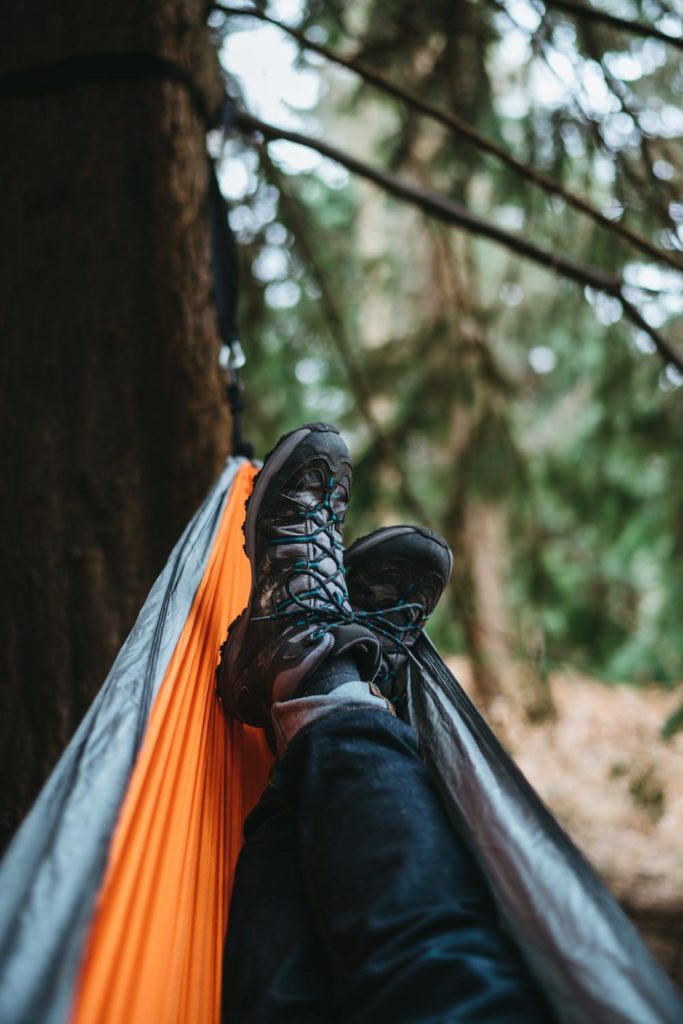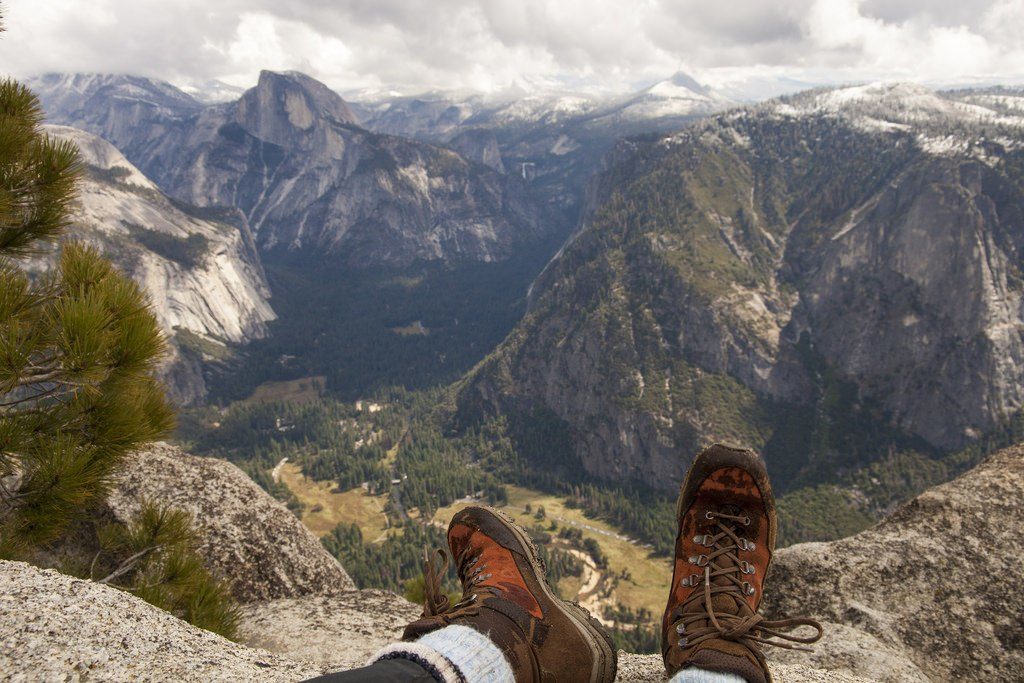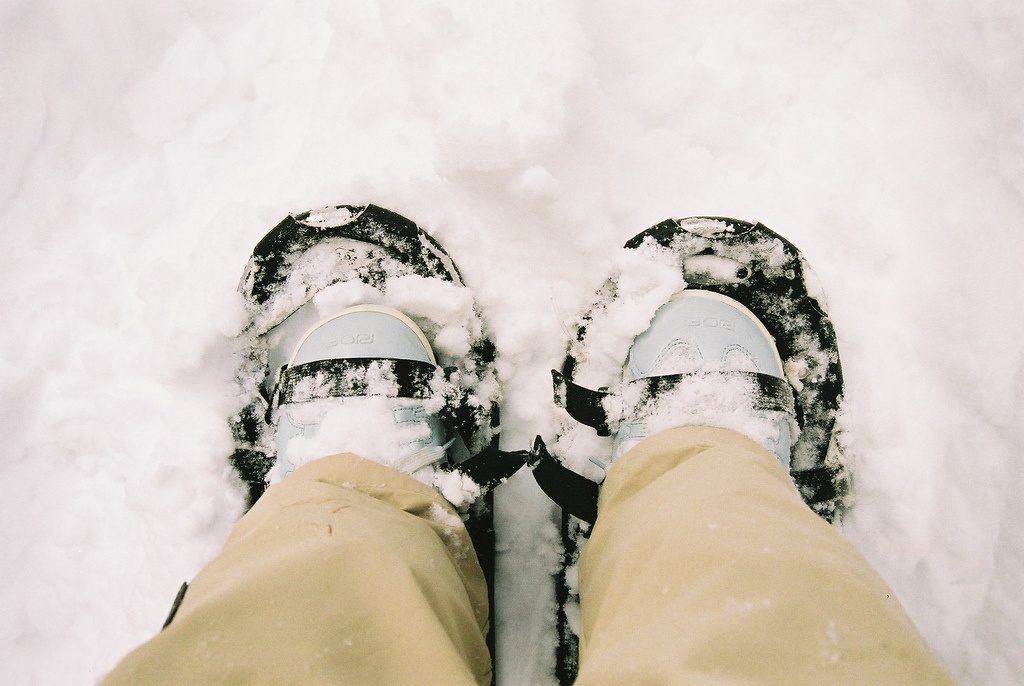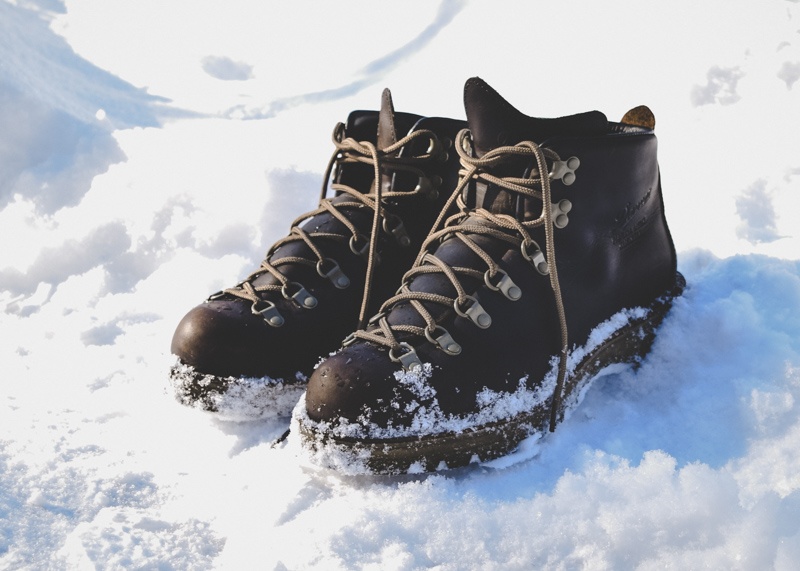Heading out for a walk in the train and wondering if hiking boots are waterproof?
Most hiking boots are water resistant and are fine for walking in shallow puddles, in the rain, and through the mud – but eventually, you will get wet. When wading in deeper water up to the ankles or in a heavy downpour, then you can either wear hiking boots with a higher waterproof rating (which take longer to get wet) or you can opt for lighter trail running shoes that dry faster and are more breathable.
Boots with the highest waterproof rating typically use more advanced materials like Gore-Tex and cost more to buy – they do a great job at stopping water from getting in but they are not 100% waterproof.
If you’re like me then waterproof hiking boots are the way to go, but there are a few important arguments against waterproof boots that are worth looking at. Read on and I’ll go into the pros and cons of boots and why breathability is just as important for many hikers.
Water resistance and Breathability
About water resistance
 Some hiking boots are water resistant which means the materials will provide a protective barrier against light rain. They are typically treated with water repellent but the materials will absorb moisture and water will eventually reach the interior.
Some hiking boots are water resistant which means the materials will provide a protective barrier against light rain. They are typically treated with water repellent but the materials will absorb moisture and water will eventually reach the interior.
If you do most of your hiking in warm weather or in the drier summer months, then hiking boots that are only water-resistant (rather than waterproof) will be fine. If you live in more unpredictables climates like the UK where the next rainstorm could come at any minute then you’ll be better off with higher waterproof rated boots.
That said many hikers nowadays prefer to wear lightweight trail running shoes for their hiking as they have the major advantage of being lightweight, breathable and very fast to dry.
Waterproof
No hiking boot is really fully waterproof – although higher rated waterproof boots will do a very good job at stopping rain from getting inside your boots. That said keeping your feet bone dry all day is almost impossible – even when it’s not raining.
That’s because sweat and moisture build up as you walk and your boots will be prone to get damp from the inside out. That’s one of the major reasons that you may prefer to wear more breathable shoes rather than fully waterproof boots like rubber boots (more on wellies later). A good compromise between breathability and waterproof is to wear boots that have a membrane like Gore-Tex.
Gore-Tex seals the boots from water on the outside and by using tiny holes in the material allows moisture to escape.
In the rainy season, I wear my North Face Hedgehog Fastpack on my mountain bike and when walking in heavy downpours and my feet have always stayed dry. I’ve worn them in the hot summer months hiking on the dusty trails of Andalucia – and they have done a great job of staying breathable. They have impressed me the most out of any piece of footwear I’ve worn. The added bonus is they’re very light and weigh about a half more than a pair of gym trainers – which makes them easy pack and means I can trek longer with less fatigue.

Waterproof hiking boots, for & against.
.
The argument for
Proponents of the waterproof hiking boot (like me) point to the fact that they’ll keep your feet dry in bad weather, heavy downpours and when wading through puddles.
Of course if you’re stepping in anything deeper than you ankles then water is going to flow in and get you completely soaked. As long as you keep water below this threshold, then the chances of your feet getting wet from the outside is slim.
But, short of those river crossings, my feet stayed perfectly dry through mud, tall grasses and shrubs. My socks remained dry and my feet toasty. I was even able to wear my socks to bed most evenings.
AJ, GearPatrol
Your feet might get a little damp from sweat, but this is nothing compared to how wet they would be in a heavy downpour without the waterproofing barrier.
If you’re hiking in the rain regularly then it’s pretty clear to me that wearing waterproof boots is the way to go. That said there are many hikers who would disagree.
The argument against
Those against waterproof boots cite the reduced breathability that you compromise with waterproofing – even with membranes like Gore-Tex (it’s true to some extent – but some cheaper hiking boots can be both sweaty and completely non-waterproof.).
Those against waterproofing also like to point out that lighter breathable boots dry quicker and so although they do get wet – they’re not going to stay as wet for long.
If you’re going to get wet either way, I’d rather have an option that’ll dry quicker on the trail, and that’s a boot without waterproofing.”
Tamer, GearPatrol
While it’s true that waterproof boots take longer to dry and stay wet for longer – the fact that they only get wet in extreme conditions is overlooked. I guess the choice comes down to whether you want wet boots that dry quickly or boots that rarely get wet but dry much slower.
In the end the choice between a waterproof hiking boot or a non-waterproof boot comes down to the conditions your likely to be hiking in.
Do hiking boots work in the snow?
Only hiking boots with a high waterproof rating will be useful for walking in the snow. If you step into deep snow with hiking boots that are not waterproof then snow may melt between the laces and be absorbed by the material – leaving you with damp and potentially cold feet in a short amount of time.
If your hiking in fresh snow over long distances then it’s a good idea to wear snowshoes which will distribute your weight and make it much more comfortable to walk.

What about rubber boots?
A cheaper alternative is to wear wellies (water or rubber boots) which are made from plastic and rubber and come up high on your leg. These are fully waterproof but are not as comfortable as hiking boots when walking over more challenging terrain.
You’ll still get damp feet from condensation and sweat building up in your socks as rubber boot have zero breathability.
For hiking along trails hiking boots give you better grip and a more precise fit. Rubber boots are better for short country walks or working in your backyard.
Final thoughts
Not all hiking boots are waterproof and not all hiking boots are breathable. There are two ways to get wet feet – from water seeping through the outside layers or moisture building up from sweat that can’t escape from the inside.
Waterproof boots will protect you from the rain, while breathable boots will keep you dry from your own sweat. Membranes like Gore-Tex do a great job of both and will keep you dry for longer.
The one thing that some non-waterproof boots have going for them is that they dry much faster – so although they do get wet, they won’t STAY wet.
If you’re hiking regularly in the rain then waterproof boots can make an otherwise miserable trek – great fun. If you’re trail running or day trekking on dry tracks with little chance of water contact – then you don’t really have to worry about waterproofing.
I hope you enjoyed reading this, feel free to check out our other outdoor guides and gear reviews. Thanks for reading and enjoy the trail.





